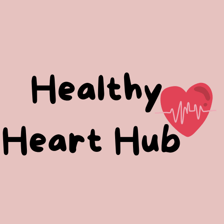Breaking the Silence: Women and Heart Disease
This post looks at how Heart disease symptoms may differ in Women compared to Men. It highlights the fact that Women may sometimes struggle to get a diagnosis of heart disease compared to male counterparts and the dangers that this causes.
HOW TO LOWER CARDIOVASCULAR RISKMINDSET AND PSYCHOLOGY
3/19/20254 min read


Heart disease has long been seen as a “man’s disease,” but this misconception is not just outdated—it’s dangerous. In reality, heart disease is the leading cause of death for women worldwide. Despite this, many women struggle to receive a timely and accurate diagnosis. The symptoms of heart disease often present differently in women than in men, leading to misdiagnosis or even dismissal by the medical community. Understanding these differences, advocating for better care, and spreading awareness can empower women to take control of their heart health and get the treatment they need.
How Heart Disease Symptoms Differ in Women
For decades, the medical community has focused on men’s heart disease symptoms, particularly the classic “crushing chest pain” associated with heart attacks. However, women often experience symptoms that are more subtle, making them harder to recognize.
Common Heart Attack Symptoms in Men:
Intense chest pain or pressure
Pain radiating to the left arm or jaw
Shortness of breath
Sweating
Common Heart Attack Symptoms in Women:
Unusual fatigue, sometimes days or weeks before a heart attack
Shortness of breath
Nausea or vomiting
Dizziness or lightheadedness
Pain in the back, neck, or jaw
Chest discomfort that feels like pressure, rather than sharp pain
Because women’s symptoms can be vague, they are often mistaken for anxiety, indigestion, or even just exhaustion. Many women dismiss their symptoms themselves, assuming they are simply overworked or stressed. This delay in seeking medical attention can be fatal.
Why Women Struggle to Get the Right Diagnosis
Medical Bias and Misdiagnosis
Despite growing awareness, there remains a bias in how heart disease is diagnosed and treated in women. Many medical studies have historically been conducted on men, meaning that much of the research and treatment guidelines are based on male physiology. When women present with non-traditional symptoms, they may be misdiagnosed with conditions like panic attacks or acid reflux instead of heart disease.
A study published in the Journal of the American Heart Association found that women were more than twice as likely than men to be misdiagnosed when presenting with heart attack symptoms, and are 30% more likely to have stroke misdiagnosed in the emergency department. This contributes to poorer outcomes for women, who may not receive life-saving treatments like stents or clot-busting medications within accepted timeline guidelines.
Delayed Treatment and Dismissal
Even when women seek medical attention, they often face delays in getting the care they need. Some doctors may downplay their symptoms, attributing them to stress, anxiety, or hormonal changes. Women themselves may hesitate to push for further testing, worrying they are overreacting. This combination of external dismissal and self-doubt can have deadly consequences.
A woman experiencing symptoms that feel “off” may be sent home without proper testing, only to suffer a heart attack later. The reality is that women know their bodies best. If something feels wrong, it’s essential to persist until proper tests—such as an electrocardiogram (ECG), blood tests, CT, or even an angiogram—are performed.
How We Can Raise Awareness and Save Lives
1. Educating Women About Their Unique Risks
Many women don’t realize that heart disease is their biggest health threat. Public health campaigns often focus on breast cancer awareness, yet heart disease kills more women than all cancers combined. Women need to understand their risk factors, which include:
High blood pressure
High cholesterol
Diabetes
Smoking
A sedentary lifestyle
Stress and depression (which impact women’s heart health more than men’s)
A family history of heart disease
Pregnancy complications like preeclampsia or gestational diabetes
Knowledge is power. The more women learn about their unique heart disease risks, the more proactive they can be in preventing and recognizing symptoms early.
2. Encouraging Women to Advocate for Themselves
One of the most powerful tools women have is their voice. If a woman feels that her symptoms are being dismissed, she should insist on further testing or seek a second opinion. Knowing key phrases like “I am concerned this could be my heart” or “I need a cardiac workup” can help push for the right tests.
Women should also track their symptoms and note patterns—when they occur, how they feel, and what triggers them. This can provide critical information to healthcare providers and help avoid misdiagnosis.
3. Training Medical Professionals to Recognize Gender Differences
The medical field is making strides in recognizing the differences in how heart disease presents in women, but there is still a long way to go. More research is needed to develop better diagnostic tools tailored to women. Additionally, healthcare professionals should receive more training in recognising and addressing heart disease in women to close the gender gap in treatment. There are many heart conditions and causes of heart attacks that are more prevalent in women. Two such examples are Spontaneous Coronary Artery Dissection (SCAD) and postpartum Cardiomyopathy. Getting more awareness around these types of conditions would be helpful.
4. Using Social Media and Community Outreach
Spreading awareness doesn’t have to be complicated. Social media campaigns, women’s health conferences, and community outreach programs can all help educate women about heart disease. Sharing personal stories can be particularly powerful—when women hear about others who experienced similar symptoms and fought for their diagnosis, they are more likely to take their own symptoms seriously. The "Go red for women" campaign from the American Heart Association has been gaining a lot of traction over the years and is an excellent source of awareness.
Inspiring Change: Women Taking Charge of Their Heart Health
Heart disease is not just a medical issue—it’s a women’s health crisis. But by raising awareness, pushing for better medical treatment, and advocating for ourselves and each other, we can change the narrative. Every woman should feel empowered to speak up, demand proper care, and take proactive steps to protect her heart health.
If you or someone you love experience symptoms that doesn't feel right, don’t wait. Listen to your body, trust your instincts, and get checked. The sooner heart disease is detected, the better the chances of survival and recovery.
Heart disease does not have to be a silent killer among women. By talking about it, educating ourselves, and fighting for better medical care, we can turn awareness into action and save lives.
Your heart matters. Your voice matters. Speak up, take charge, and protect your heart.
